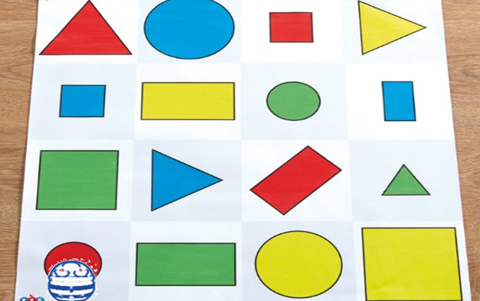Blue-Bot challenges

About this lesson
Use these challenges created by Kylie Docherty, QSITE to provide opportunities for students to learn how to design and follow a series of steps to program Blue-Bot.
Year band: 1-2
Curriculum Links AssessmentCurriculum Links
Links with Digital Technologies Curriculum Area
| Strand | Content Description |
|---|---|
| Processes and Production Skills |
Follow and describe algorithms involving a sequence of steps, branching (decisions) and iteration (repetition) |
Links with English Curriculum Area
| Strand | Content Description |
|---|---|
| Literature |
Retell and adapt familiar literary texts through play, performance, images or writing Discuss literary texts and share responses by making connections with students’ own experiences (AC9E1LE02) Discuss plot, character and setting, which are features of stories (AC9E1LE03) |
Links with Mathematics Curriculum Area
| Strand | Content Description |
|---|---|
| Measurement |
Identify and compare attributes of objects and events, including length, capacity, mass and duration, using direct comparisons and communicating reasoning (AC9MFM01) Compare directly and indirectly and order objects and events using attributes of length, mass, capacity and duration, communicating reasoning (AC9M1M01) Measure and compare objects based on length, capacity and mass using appropriate uniform informal units and smaller units for accuracy when necessary (AC9M2M01) |
| Location and transformation |
Describe the position and location of themselves and objects in relation to other people and objects within a familiar space (AC9MFSP02) Give and follow directions to move people and objects to different locations within a space (AC9M1SP02) |
Links with The Arts Curriculum Area
| Strand | Content Description |
|---|---|
| Dance |
Use the elements of dance to choreograph dance sequences (AC9ADA2C01) |
Assessment
| Challenge 1: Getting in shape |
Teacher observation Are the shapes written in the correct order to program Blue-bot? Are the attributes of shapes described correctly? |
|---|---|
| Challenge 2: Feed the animals |
Cognitive interview (think Aloud) Ask students to describe the path taken and their choice of steps. |
| Challenge 3: How far is it? |
Teacher observation Worksheet with prediction of number of steps and turns compared to actual number of steps and turns. Student reflection on measuring using the Bluebot ruler. |
| Challenge 4: Alphabet fun |
Teacher observation Can the students correctly spell out a word using the alphabet mat? Record using a checklist that includes 2, 3, 4, and 5 letter words. |
| Challenge 5: Fairytale friendship |
Peer assessment Students retell their fairy-tale using their sequence of steps and Bluebot. Class members listen and use a simple checklist to determine the following:
|
| Challenge 6: Dance moves |
Cognitive interview (think Aloud) Students explore and demonstrate the fundamental movements that they can make the Bluebot perform. Ask students to describe the dance steps and their choice of dance steps. |
Suggested steps
Provide opportunities for your students to learn how to design and follow a series of steps to program Bluebot. Select from this a series of challenges that integrate other learning areas.
Discussion
- How does the Blue-Bot know where to move?
- What did you learn about giving Blue-Bot instructions?
- What happens if you miss out some steps in your program? How do you fix that?
Why is this relevant?
These challenges are an authentic way to introduce students to simple programming while consolidating concepts such as using positional language, sequencing events and ideas and estimating and measuring. It focuses on developing foundational skills in computational thinking, and on developing an awareness of digital systems through personal experience of them.
F–2 students should be provided with opportunities to explore new concepts such as algorithms through guided play, including hands-on, kinaesthetic and interactive learning experiences. Students begin to develop their design skills by conceptualising algorithms as a sequence of steps/procedures for carrying out instructions to solve simple problems or achieve certain things, such as identifying steps in a process or controlling a Blue-Bot.
At the F–2 level, where learning at the pre-programming stage is the expectation, there is no requirement to learn a particular programming language. However, in years F–2 students do learn some basic programming skills, such as working out steps and decisions required to solve simple problems. For example, they program a robotic toy or sprite to move in a certain direction. The focus at this level is on designing a sequence of steps.